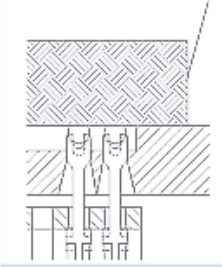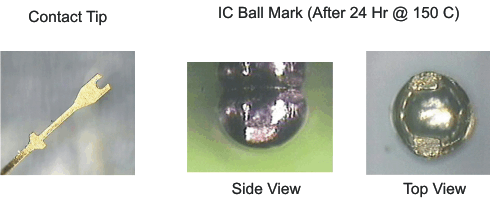SPRAA99C March 2008 – May 2021 AM3351 , AM3352 , AM3354 , AM3356 , AM3357 , AM3358 , AM3359 , AM4372 , AM4376 , AM4377 , AM4378 , AM4379 , OMAPL138B-EP , TMUX646
6.4 Micro Tuning Fork Contact
Micro tuning fork contact system with vertical launch secures the solder balls to provide stable electrical continuity. Figure 6-6 shows how the micro fork contacts solder ball as well as solder witness marks after 24 hours at 150°C. There is also no contact made on the bottom of the solder ball preventing ball damage that could affect solder ball planarity specification, as illustrated in Figure 6-7.
 Figure 6-6 Micro Tuning Fork Contact for 0.5mm Pitch
Figure 6-6 Micro Tuning Fork Contact for 0.5mm Pitch Figure 6-7 Micro Tuning Fork Contact and Contact Marks on Solder Balls
Figure 6-7 Micro Tuning Fork Contact and Contact Marks on Solder Balls